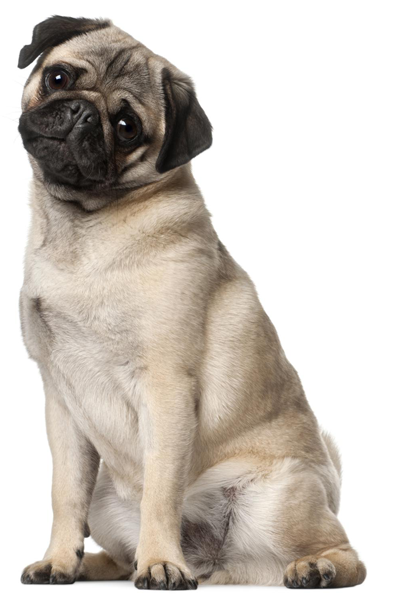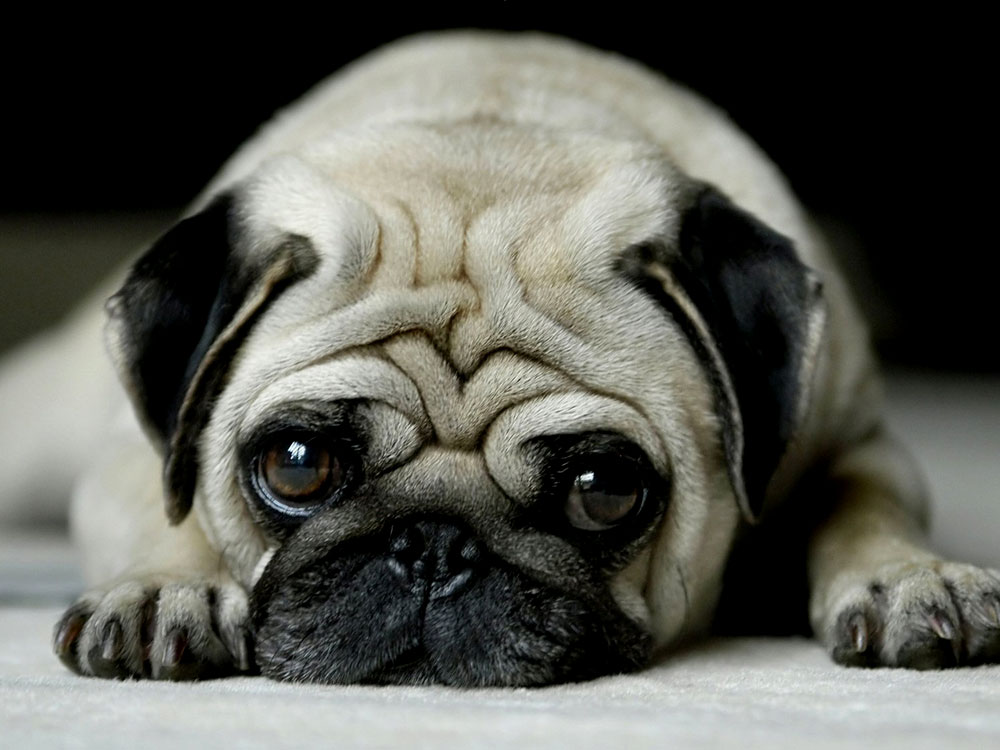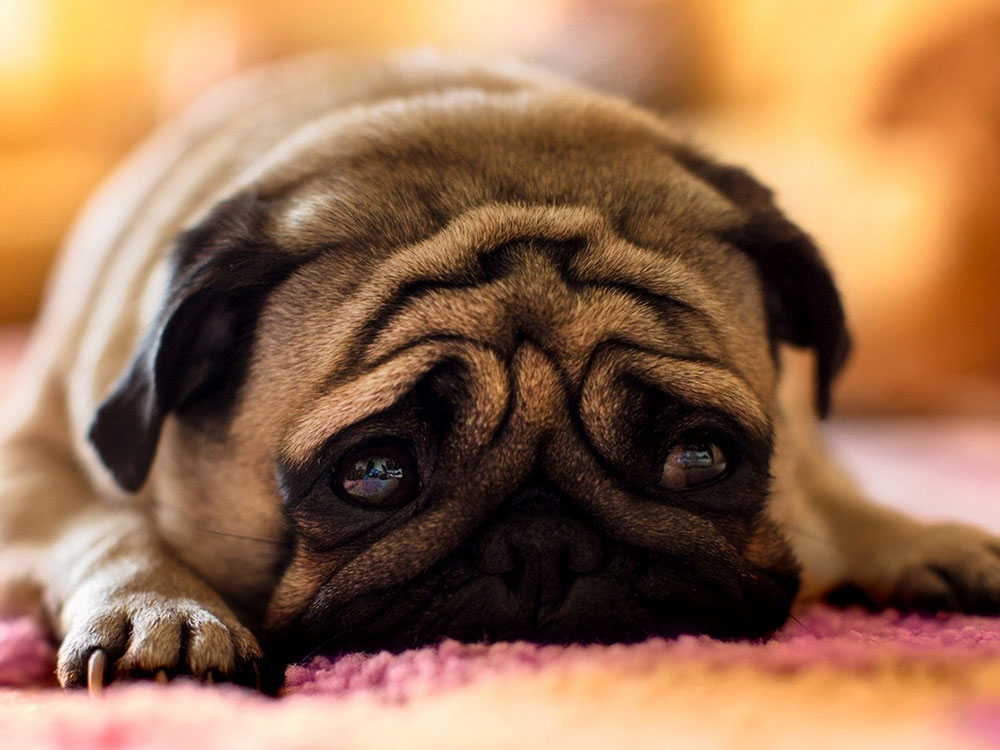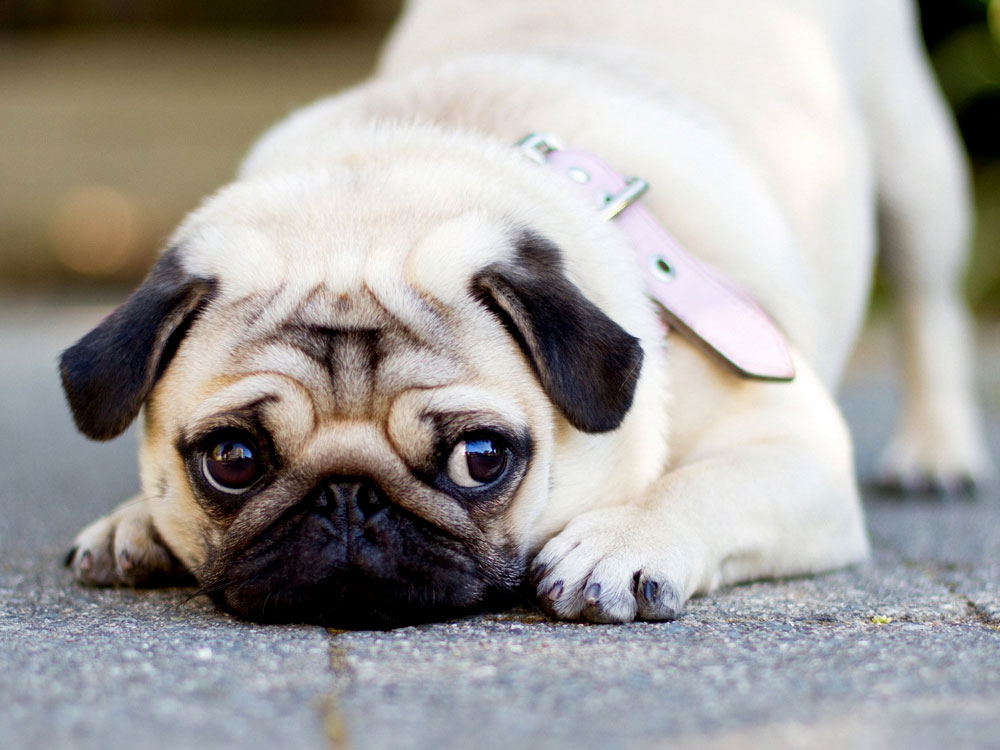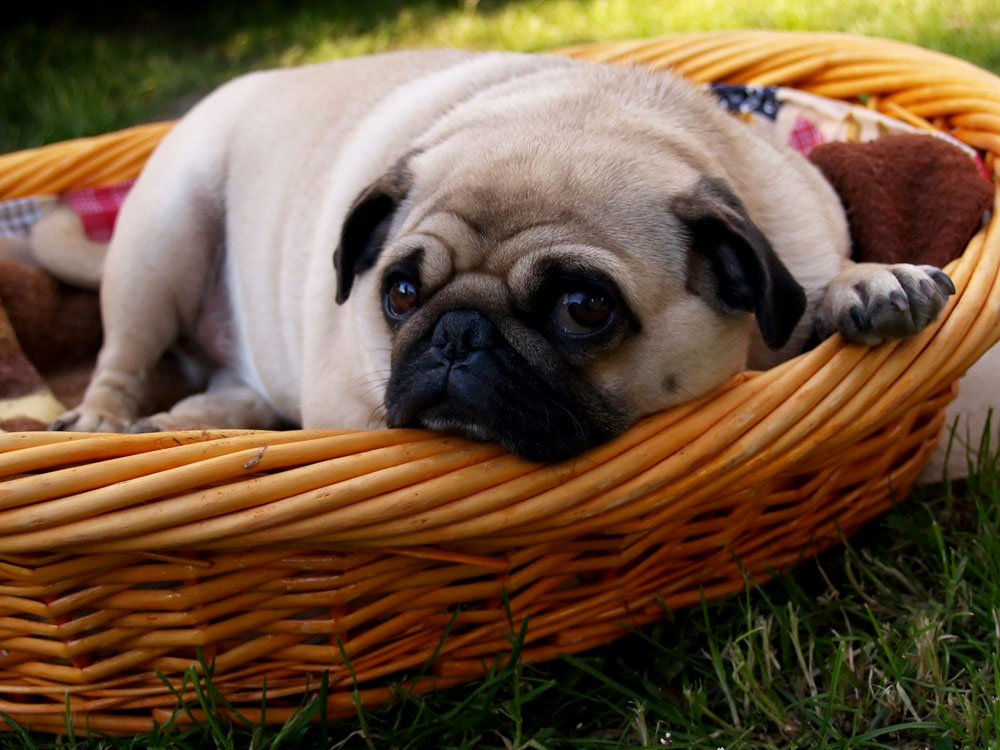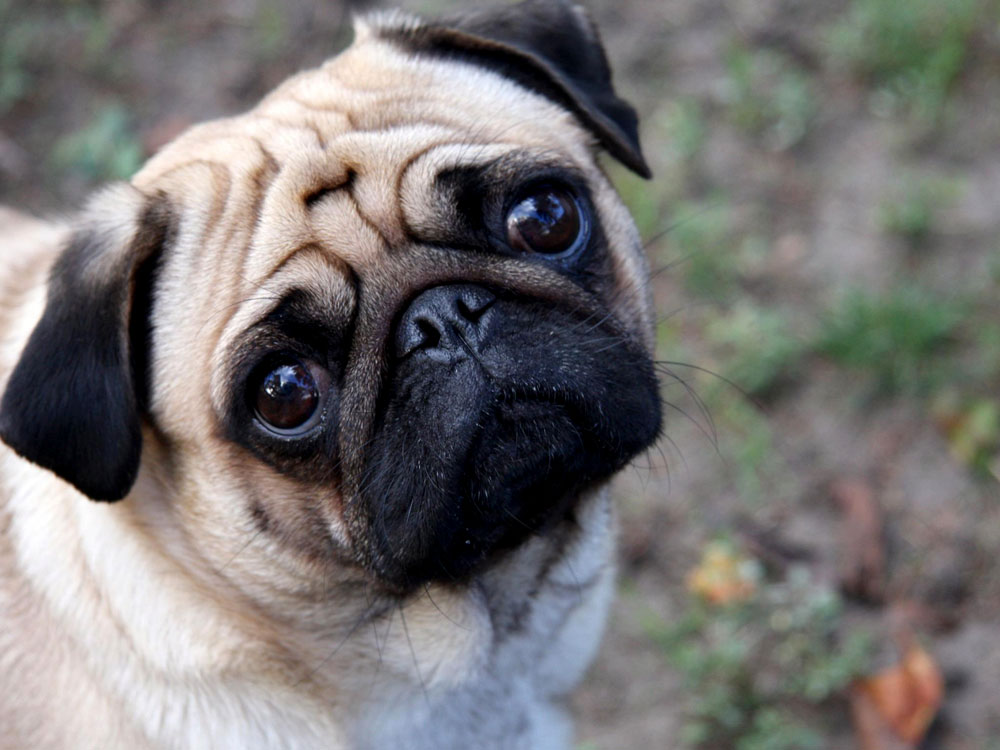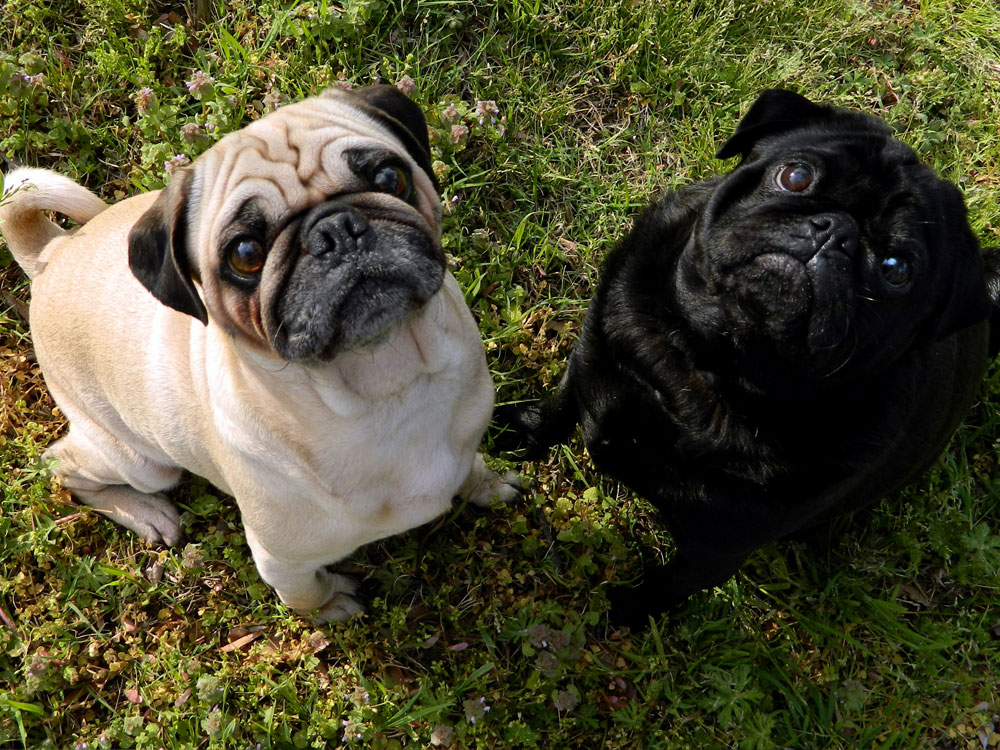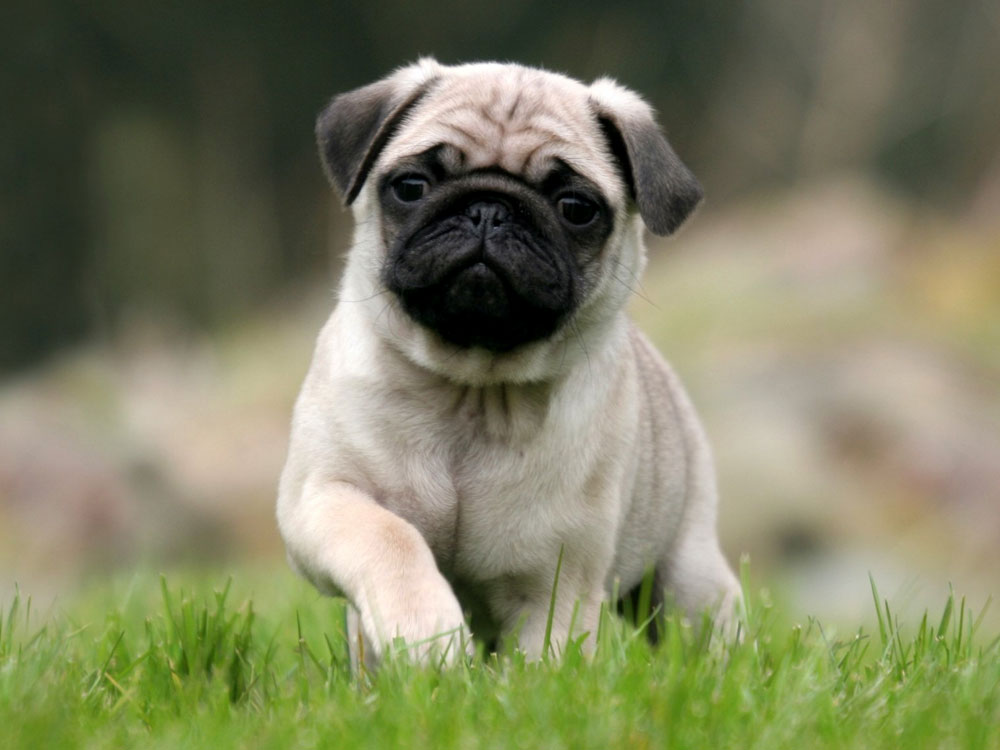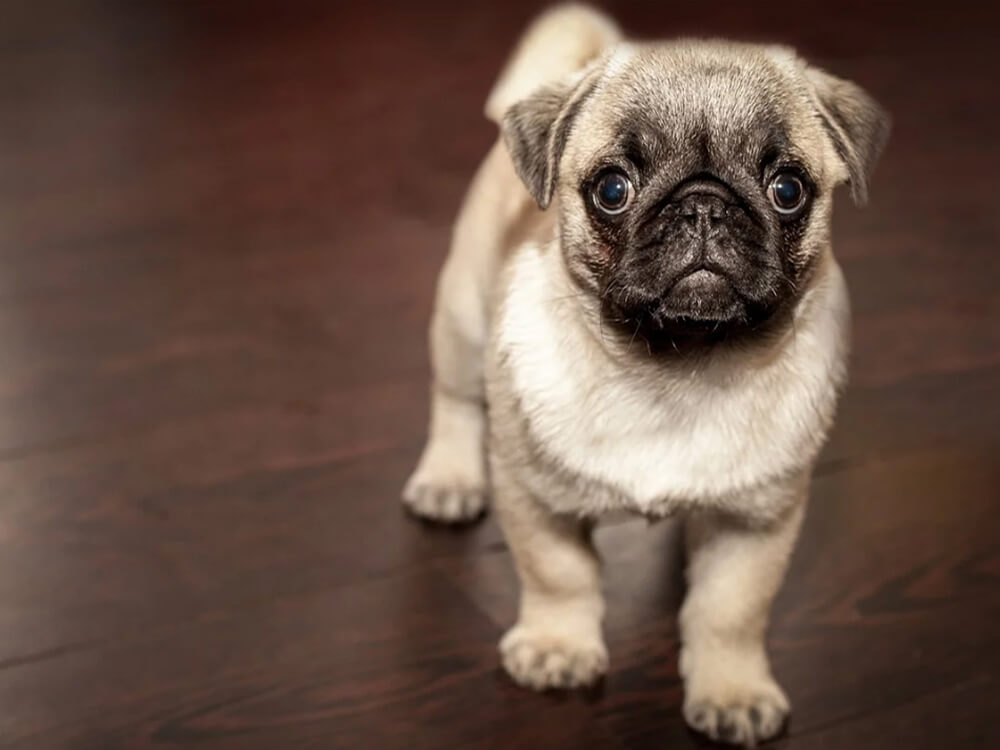
Pug Breed Pictures
Vital Breed Stats
| Height: | 30 - 36 cm M | 25 - 30 cm F |
| Weight: | 6 - 9 kg M | 6 - 8 kg F |
| Breed Group: | Pastoral Dog Group |
| Life Expectancy: | 13 - 15 years |
| KC Registered: | No |
Breed Characteristics
| Size: |  |
| Grooming: |  |
| Exercise Level: |  |
| Trainability: |  |
| Barking Level: |  |
| Good with Children: |  |
| Good with other pets: |  |
| Affectionate: |  |
| Protective: |  |
| Cost to Keep: |  |
Give a thumbs up if you love the Pug

0
More About the Breed
History
Pugs are believed to have originated in China as companions of emperors dating back to 206 BC to 200 AD. They lived a life of luxury and were guarded by soldiers. During the 1500s, the first pugs arrived in Europe through Dutch traders. The breed once again became a favourite of royal households and was always included in portraits, postcards, and paintings of popular people. Notable individuals who owned pugs were William of Orange, Napoleon Bonaparte, Queen Victoria, and William Hogarth.
Originally called Lo Chiang-Sze in China, the Pug had various names as it travelled to different parts of the world. It was called mopshond in Holland, doguillo in Spain, mops in Germany, and carlin in France. Finally, in the 1700s, the breed got its final name when its facial expression was compared to a marmoset pug monkey. The pug is recognised by the Kennel Club in the UK.
Appearance
Grooming
This breed is generally low-maintenance, so a monthly bath is enough. However, it is a heavy shedder, so daily brushing with a soft-bristle comb or hound glove is needed to keep the shedding to a minimum. Make sure to keep its facial wrinkles clean and dry to avoid infection and foul smell.
It is also important to check it for ticks and fleas, regularly clean its ears, and trim its nails. Oral hygiene is often overlooked by dog owners. Ensure that its teeth are brushed two or three times a week and it's given chew bones or toys to remove tartar and build strong teeth.
Temperament
Intelligence
This silly dog is intelligent, but it can be strong-willed. It was bred as a companion dog, so it won’t be interested in hunting or retrieving. It can also be difficult to house-train. Since the pug is an owner-pleaser and food-driven dog, praises and food rewards should be a part of your trainings.
Breeds do have common predisposition in terms of personality and intelligence. Nonetheless, a lot of factors contribute to its development, including the environments—where it was born and the home it grows up in.
Nutrition
- Senior and less active: up to 410 calories daily
- Typical adults: up to 500 calories daily
- Physically active/working dogs: up to 620 calories daily
Feeding
Health
Exercise
Cost of Ownership
Owning a pet is costly, which estimated from £700 to £900 and regardless of what breed it is. However, yearly expenses tend to be lower for smaller dogs because food and equipment cost less. Expect to shell out £420 for your pug’s high-quality food and £120 for treats and toys. Of course, you also need to spend for your dog’s basic necessities like bowls, bed, lead, crate, shampoo, toothbrush, and other accessories.
Pet insurance will be between £300 and £500 depending on the coverage plan you choose. For annual vaccinations and flea/worm treatments at the vet’s, allocate at least £150. Remember that this rough estimate does not include major veterinary treatments your insurance does not cover.
Pug Breed Highlights
- The Pug is a loving dog that craves attention and would get depressed when ignored.
- It is an endearing dog that is mischievous, stubborn, and comical.
- The breed is the perfect apartment dog as it rarely barks and loves lazing around.
- In the grooming front, it is low-maintenance because it has a short coat, but it does shed heavily.
- It is prone to obesity, but its physical activities should be regulated as it easily overheats.
